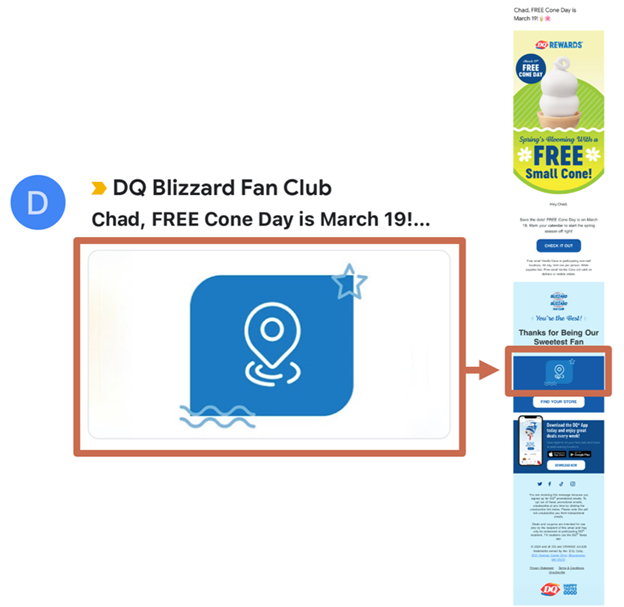What Email Marketers Should Be Upset About
There’s no shortage of things in email marketing to be irritated about. The lack of email coding standards, the inconsistent email rendering, the partial support for CSS-based interactivity, the partial support of AMP for email, inconsistent implementations of dark mode, how expensive BIMI VMCs are,… Marketers have also been perpetually frustrated by the big differences between spam filtering algorithms at the major inbox providers—although Google and Yahoo recently agreed on deliverability standards, and Microsoft is considering signing on as well. So, that’s a huge win for email marketers.
While all of those things are frustrating, there aren’t many things to be truly upset about. After all, email marketing allows massive audience reach, enjoys unrivaled consumer acceptance, supports rich and personalized messaging, and generates an incredibly strong return on investment, particularly when compared to other channels.
While there aren’t many things to be upset about, there are a few. Please indulge my rant.
Email Annotations & Schema Being Forced on Brands
Email annotations and schema allow brands to, among other things, replace their preview text with other preview content, including preview images, deal discounts, discount codes, and discount expiration dates. They’ve been around for years and brands don’t see much value in them for a variety of reasons, including not wanting their emails to look like ads and difficulty in measuring lift.
Gmail and Yahoo appear to be dissatisfied with the incredibly low adoption, so they’ve taken it upon themselves to boost usage by forcibly applying it to brand’s marketing emails. Google calls it Automatic Extraction.
Not only does this practice disrespect the choice of brands to not use annotations and schema for their emails, but it’s also poorly implemented. For example, in the email below, Duluth Trading clearly wanted subscribers to open this email to reveal the deal. However, Automatic Extraction spoiled the reveal, undermining a key campaign goal, generating opens.

When highlighting images from the email’s body, Automatic Extraction routinely grabs an image from a secondary content block. That creates disconnects between the subject line and the undesired image preview, as you see in this Dairy Queen email, which bizarrely had the store locator icon pulled into the preview content.

But most worrisome is how Automatic Extraction pulls discounts from emails. In some instances, it pulls inaccurate discount amounts from the legalese in the footer. Instances like this have caused some brands to worry about their exposure to allegations of false advertising under Federal Trade Commission regulations or to allegations of misleading envelope content under the CAN-SPAM Act. If that were to happen to a brand, they would mostly sue the inbox provider in turn for causing the misrepresentation.
In addition to those legal issues, Automatic Extraction begs the question:
Do senders own the preview content of their emails or do inbox providers?
If it’s inbox providers, will they also change the preview text of personal emails? Would they, for instance, use generative AI to create a better summary of the email than the preview text provides? If they wouldn’t manipulate personal emails, why is it okay to change marketers’ messages without their consent?
Also, if inbox providers think they can create better preview content than senders, will they also rewrite senders’ subject lines? Would they use GenAI to summarize the entire email, pushing the email content down or hiding it entirely behind a View the original email link? If they wouldn’t do that, what’s different about the preview text?
Automatic Extraction prompts so many uncomfortable questions about permission, ownership, accurate representation, and legal liabilities.
Unsubscribe Prompts after 30 Days
For more than a decade now, most mailbox providers have stressed the need for a sender’s subscribers to not just tolerate their emails, but to engage with them. Based on our extensive deliverability experience with mailbox providers’ spam filtering algorithms, they expect subscribers to engage with emails in a positive way every 6 to 12 months, on average. And higher quality engagement seems to satisfy mailbox providers for up to 18 to 24 months!
This generous timeframe respects that some subscribers like to stockpile marketers’ emails until they are in-market, and then they search for the latest email from them. Given that, it’s difficult to square mailbox providers’ usage of unsubscribe prompts.
Gmail, Apple, and Yahoo have also prompted users to unsubscribe from brands whose emails they haven’t opened in as little as 30 days. If these were subscribers who had never engaged with a sender’s emails—a never-active subscriber—that would make sense, but these prompts are served up to previously engaged subscribers.
I’ve personally been prompted to unsubscribe from senders whose emails I’ve engaged with just days before.
I mentioned unsubscribe prompts in my Only Influencers article that explored What's Wrong with Email Marketing? With Google and Yahoo mandating list-unsubscribe headers as part of their joint deliverability requirements, unsubscribe prompts seem to be on the rise. Moving from a 30-day prompt to a 90- or 100-day prompt would be much more reasonable and better aligned with how many consumers actually use promotional email.
MPP Making It Hard to Manage Inactivity
As already mentioned, mailbox providers expect marketers to stop mailing subscribers who haven’t engaged with their emails in a long time. Engagement-based spam filtering has been a core part of email deliverability for more than a decade now, including at Apple. So, it was a shock when Apple introduced Mail Privacy Protection, which (among other things) obscures opens, the dominant engagement signal.
At the time, I bemoaned how Apple was breaking the social contract between marketers and mailbox providers. More than 2 years into the Fifth Age of Email Deliverability, MPP continues to be a major challenge for legitimate senders who are just trying to follow mailbox providers’ rules despite being handicapped by Apple, which is the leading inbox provider in the US.
</rant> Being upset isn’t particularly healthy. But venting your frustration can be cathartic—as well as an important step toward acceptance.
 Photo by Claudio Schwarz on Unsplash
Photo by Claudio Schwarz on Unsplash

 How to resolve AdBlock issue?
How to resolve AdBlock issue? 
